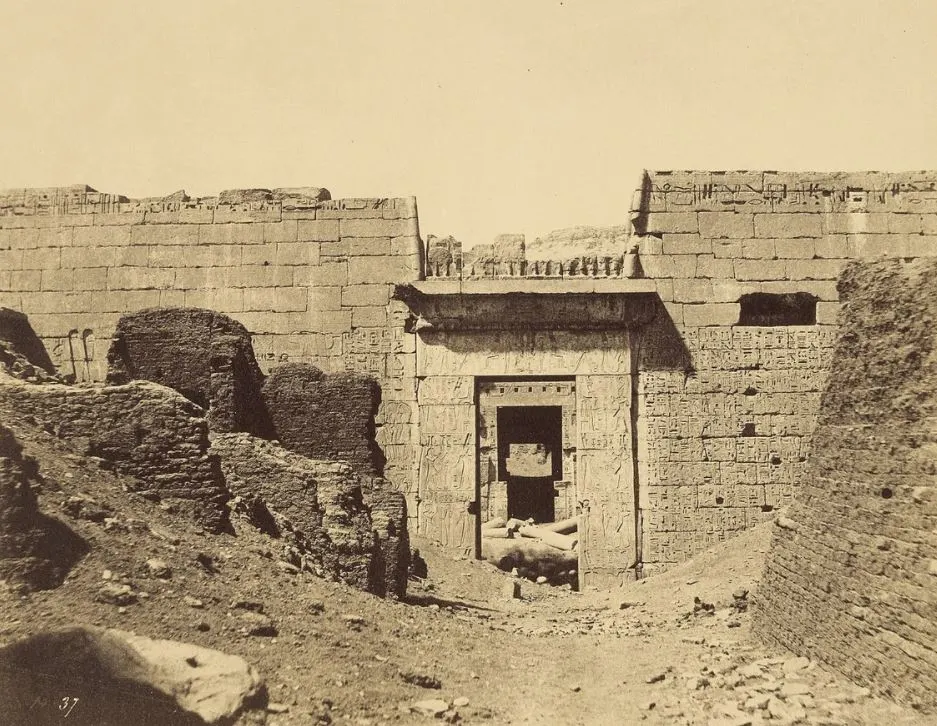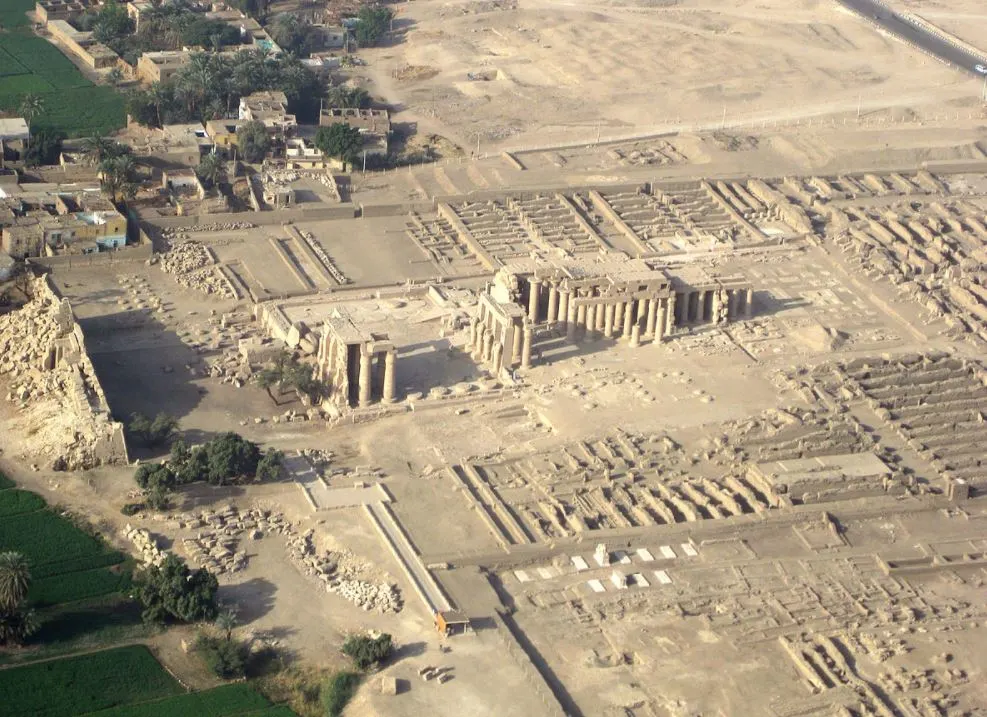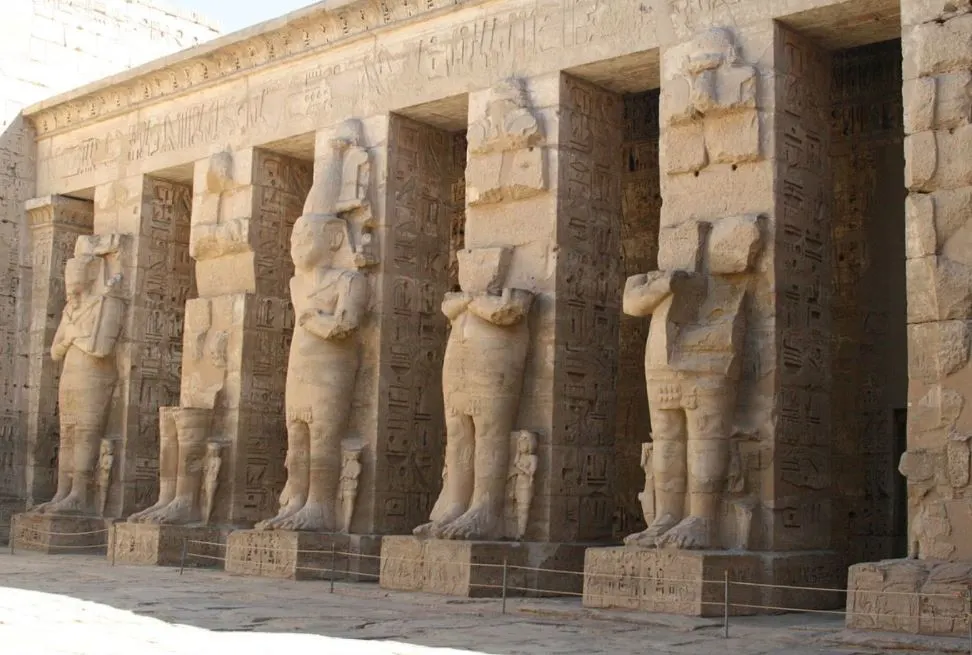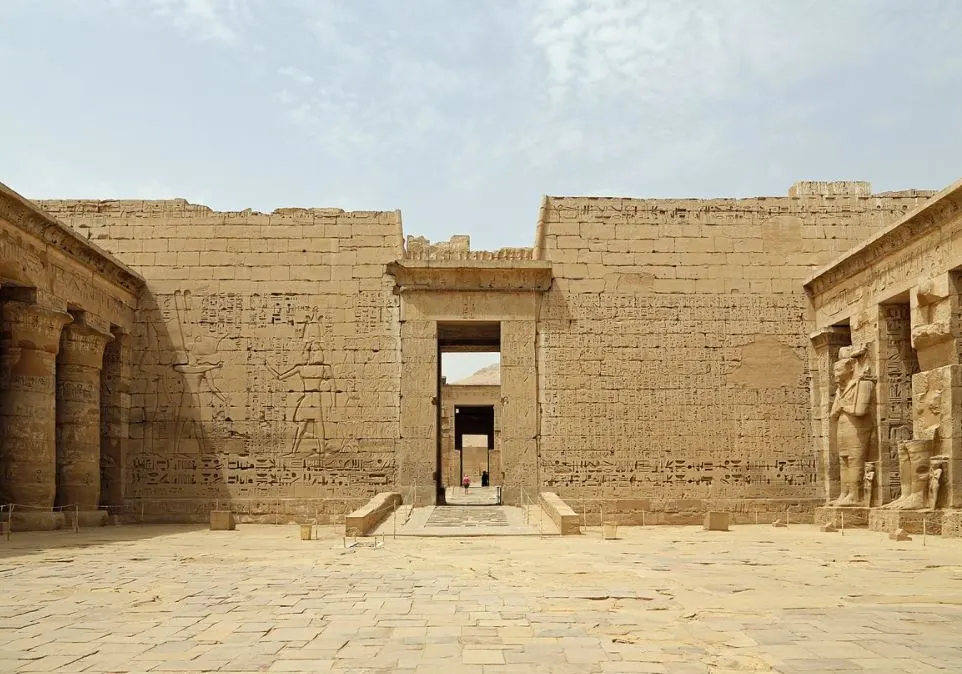One of the most remarkable sites in Egypt can be found at an archaeological site in the southern part of the country.
Let’s take a closer look at some interesting Medinet Habu facts, the site of one of the greatest ancient Egyptian temples!
1. The site is located right across Luxor
Medinet Habu is a large archaeological site that features a large number of ancient Egyptian structures. It’s situated on the West Bank of the River Nile, right at the foot of the Theban Hills.
It’s located on the opposite side of the large city of Luxor in southern Egypt, a place known for its temple complex and the nearby Karnak Temple complex as well.
This particular temple complex is situated about 3 kilometers (2 miles) away from the Nile River and with the famous Valley of the Kings which features numerous tombs of ancient Egyptian pharaohs at a similar distance to the north.

2. It features an astounding temple of the New Kingdom
Even though the archaeological site at Medinet Habu features a large number of structures, it’s pretty much synonymous today with the mortuary temple complex of Ramesses III, a man who is considered to be the final great King of the New Kingdom of ancient Egypt.
He reigned between 1186–1155 B.C. and was part of the Twentieth Dynasty (1189 to 1077 B.C.) This period was plagued with invasions from the so-called “Sea Peoples,” an unidentified seafaring group of people who attacked civilizations and empires during this period in history.
Even though Ramesses III managed to defeat this pesky confederation, it left a serious toll on the nation, and severe financial troubles resulted from it.

3. The temple is much bigger than it initially appears to be
The entire temple complex covers an area of 300 meters (984 feet) by 210 meters (688 feet) and consists of various structures. The complex is enclosed by a mudbrick wall which served as a fortification for the mortuary temple complex.

One of the most interesting Medinet Habu facts is that the temple itself is huge as well as it has a total length of 150 meters (492 meters). Its walls are relatively well-preserved compared to other temples of the same period and these feature a total of 7,000 squares (75,347 square feet) of decorations in the form of wall reliefs.
Many of these reliefs glorify the pharaoh and his wives and it gives us a clear insight into the mysterious Sea Peoples and their eventual defeat.

4. It was first described during Napoleon’s Egyptian campaign
The First Europeans who laid eyes upon the temple complex in ancient times were the French. This happened during Napoleon’s Egyptian Campaign between 1798 and 1801.
The first man to describe the temple was Vivant Denon (1747-1825), a diplomat and archaeologist who ended up becoming the first director of the newly established Louvre Museum. One of the sections of this immense museum is called “Pavillon Denon” and was named after him.
He wrote a book about his exploits in Egypt called “Voyage Dans la Basse et la Haute Egypte” (“Journey in Lower and Upper Egypt”). This work was published in 1802 and is considered to be the foundation work of modern Egyptology.

5. It took many decades before the structures were excavated
Numerous centuries of being exposed to the elements resulted in the temple complex being buried under the desert sand in the late 18th century. This means that it certainly didn’t look the way it does today back then.
It wasn’t until the year 1859 that serious attempts were undertaken to excavate the entire complex. This process would eventually take until the year 1899 before the main temple was uncovered, a massive endeavor indeed!

6. The design resembles another huge temple nearby
Ramesses III didn’t have to look far to get inspiration because one of his predecessors built an immense mortuary complex just nearby as well. The design of his temple pretty much resembles the design of the mortuary temple of Ramesses II, also referred to as the “Ramesseum.”
This massive complex of one of the most renowned pharaohs in the history of ancient Egypt, which is situated just a few hundred meters to the northeast, isn’t nearly as well-preserved. It does, however, give us a clear insight as to how it was designed.
Both temples consist of massive pylons which lead into courtyards flanked by rows of huge pillars and statues. All this leads to a small burial chamber at the end of the temple where the pharaoh was buried.
Perhaps the most distinctive feature of the temple is the entrance which resembles fortifications and citadels in other places. It’s assumed Ramesses III might have gotten inspiration for this during military campaigns in Syria.

7. The first court features multiple statues of Ramesses III
The huge first pylon of the temple leads us into a big open courtyard that is flanked by rows of huge uncarved columns on one side, and statues of the pharaoh on the other.
Even though not much of the details of these statues remain, we can still identify them as Ramesses III being depicted as Osiris, the god of the afterlife. Well, it’s a funerary temple after all, right?

8. There are 2 more pylons in this immense temple complex
The first pylon followed by the open courtyard would already make a great temple, but that’s just about 1/3 of the entire temple complex as it has a length of 150 meters (492 feet). This means that there’s still quite a bit of walking to do before you reach the end.
The second pylon leads into a similar courtyard as the first, also flanked by massive statues of the pharaoh. The third pylon eventually leads into a hypostyle hall (a space with a roof supported by columns) but this part of the temple has lost its roof.

9. There used to be a Byzantine church inside the temple complex
One of the most remarkable Medinet Habu facts is that the temple was repurposed during the Coptic period (3rd-7th century) and additional structures were built inside of the complex.
These additional structures were various Greco-Roman buildings and a massive Byzantine church as well. None of these additions still stand today as they have been lost to history without reference.

10. It features reliefs depicting Ramesses III in battle with Sea Peoples
Apart from the sheer size of the temple, the most fascinating features are the immense reliefs that decorate its walls. Many of these depict the pharaoh as he conquers foreign nations and abuses prisoners (as in the relief shown below).
It also clearly depicts the invasion of the Sea Peoples and their eventual defeat by the mighty pharaoh. Unfortunately, this came at such an expense that the country plunged into serious troubles following the death of the last great King of ancient Egypt.

